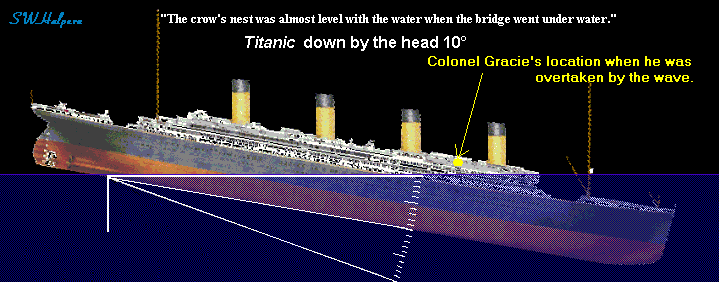How the unsinkable did the unthinkable…
Here are the reasons why the Titanic sank 102 years ago today!
It’s kind of hard to believe that the image we all have of the Titanic sinking–one half raised while the other half sinks–is the dramatic cinematography of James Cameron, not actual documented footage. In fact, before Robert Ballard found the ship’s remains in 1985, the splitting of the ship was actually unknown. Preliminary investigations in 1912 deduced that the iceberg and the iceberg alone caused the infamous ship to sink, and Captain E.J. Smith was traveling too fast at 22 knots. No flaws in the ship were ever considered. For more than 70 years it was believed that the unsinkable had a bit of bad luck, costing more than 1,500 people–about 70% of passengers–their lives.
So what changed in 1985? A lot. The US Navy agreed to fund a three week search for the Titanic, during which Ballard used the Argo, a remote controlled underwater vessel, to search for changes in debris patterns. And on September 1st, he and his team found the first conclusive sign that they were close: a boiler.
“What was so amazing about the Titanic was its state of preservation,” he noted in a live presentation for National Geographic. When they got closer to the shipwreck, it became clear that the original investigators had missed something. The ship had split, and the stern (in layman’s terms: back of the boat) was in far worse condition than the bow (front, duh). It did not just hit an iceberg and sink; something had gone wrong.
The discovery introduced a few new factors. First, in order to save money, shipbuilders used substandard steel. Divers found ribbons of steel farther away than most debris, suggesting that the iceberg, rather than gashing the ship, tore a giant hole in the hull. In a process known as “brittle fracture,” low-grade steel cracks under pressure rather than bends. This could be responsible for the ship breaking in two. Another possible culprit: subpar rivets. About three million rivets held the Titanic together, all of which seem to have been made with inadequate iron. Testing on the rivets showed that the force of the crash would have caused the heads of the rivets to break, allowing whole sections of the ship to come apart. Another problem with the ship: the sixteen watertight compartment that made the ship unsinkable weren’t so watertight after all. Remember when Jack is handcuffed below deck as the room fills with water
An ironic tragedy of history, The Unsinkable Titanic went down because a few installments were not what they needed to be. It stands, if nothing else, as a lesson brutally learned.







Leave A Comment
You must be logged in to post a comment.